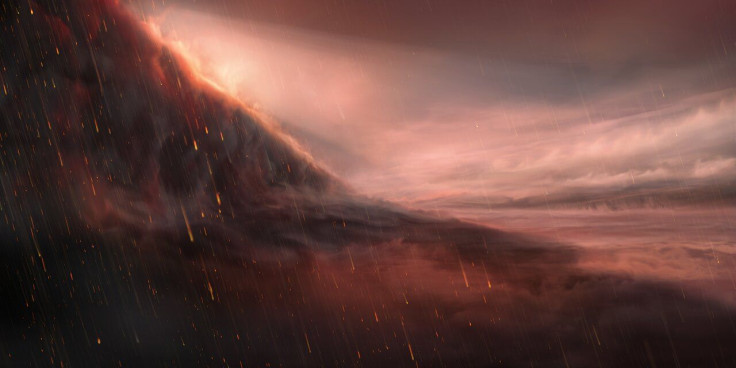Researchers Observe 'Ultra-Hot' Exoplanet Where It Rains Iron
KEY POINTS
- Exoplanet WASP-76b's extremely hot conditions can cause metals to evaporate
- The iron vapors at the night side of the planet condenses and results in 'iron rain'
- The observations were made using the ESPRESSO instrument on the Very Large Telescope
About 640 light-years away in the constellation Pisces, there is an ultra-hot exoplanet called WASP-76b where it rains in the evening. However, unlike our water rain on Earth, WASP-76b gets "iron rain."
According to the authors of the study describing WASP-76b’s iron rain, the phenomenon happens because, just like our Moon, WASP-76b is tidally locked to its parent star. This means that it is only ever showing one face to the star, leaving one face in permanent daylight and the other in perpetual darkness.
Because of this, the dayside of the planet receives so much more radiation and temperatures can climb to over 2,400 degrees Celsius (4,352 degrees Fahrenheit). It is so hot on the dayside of the planet that metals such as iron can evaporate into the air. And when the strong winds bring the vapors to the cooler night side of the planet where temperatures drop to 1,500 degrees Celsius (2,732 degrees Fahrenheit), the vapors condense into iron droplets, hence creating the iron rain.

"The observations show that iron vapor is abundant in the atmosphere of the hot day side of WASP-76b," study co-author and chair of the ESPRESSO science team, María Rosa Zapatero Osorio, said. "A fraction of this iron is injected into the night side owing to the planet's rotation and atmospheric winds. There, the iron encounters much cooler environment condenses and rains down."
The observations were made using the new Echelle Spectrograph for Rocky Exoplanets and Stable Spectroscopic Observations (ESPRESSO) instrument on the European Southern Observatory's (ESO) Very Large Telescope at the Atacama Desert in Chile. In fact, these observations from September 2018 were actually the very first science observations made using the instrument.
Interestingly, ESPRESSO was designed to search for Earth-like planets around Sun-like stars but because WASP-76B is a gas giant, scientists were able to observe, not just its existence but the gases in its atmosphere as well. In fact, the scientists were even able to observe the chemical variations at the border that separates the day and night sides of the planet.
"What we have now is a whole new way to trace the climate of the most extreme exoplanets," study lead David Ehrenreich said of ESPRESSO.
To date, there are over 4,000 exoplanets that have been discovered and are considered as "confirmed." Thousands more are candidate exoplanets that are waiting for further observations to be confirmed. According to NASA, the number of known exoplanets has doubled every 27 months since the first exoplanets were discovered in the early 1990s.
© Copyright IBTimes 2024. All rights reserved.






















